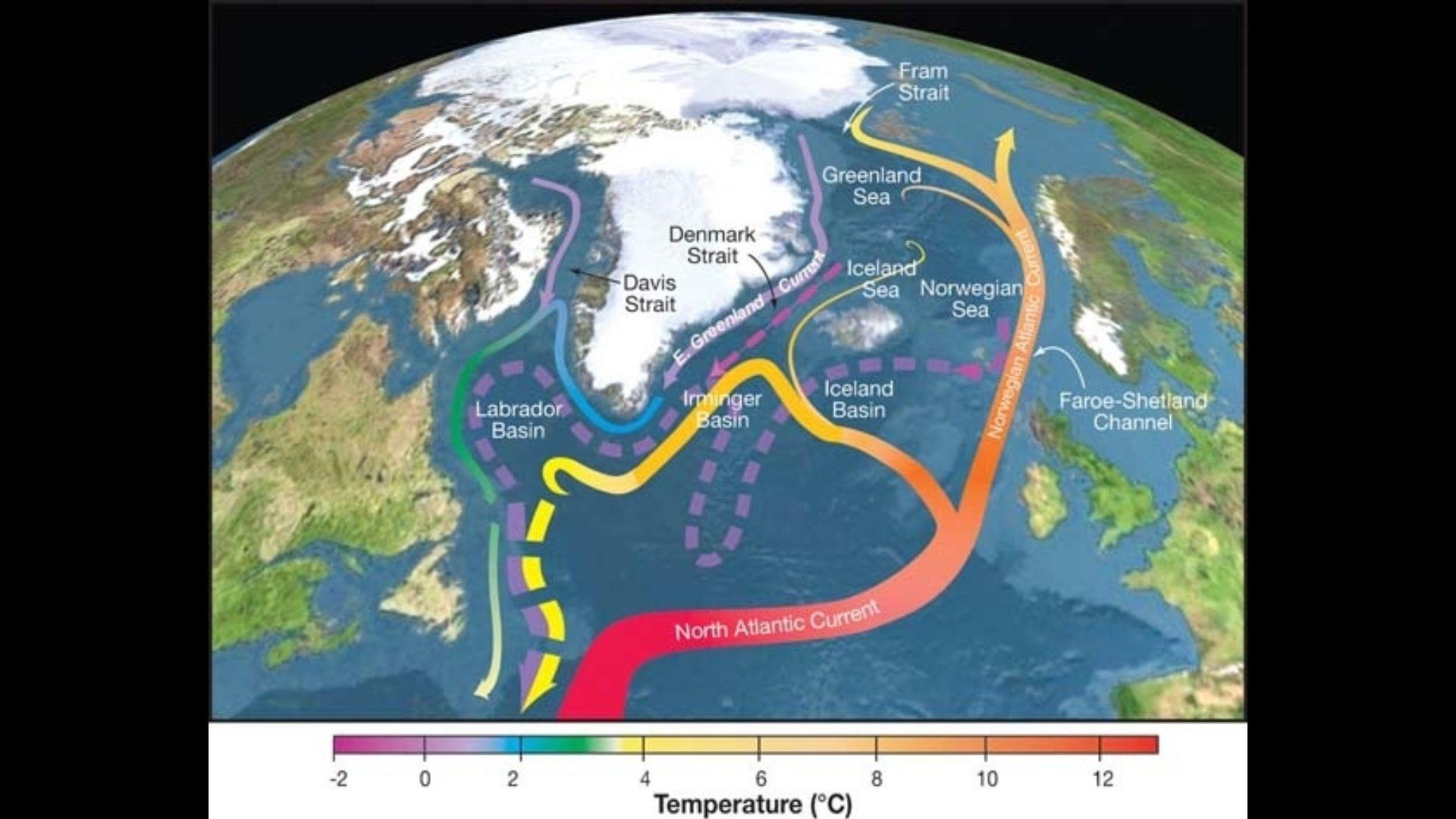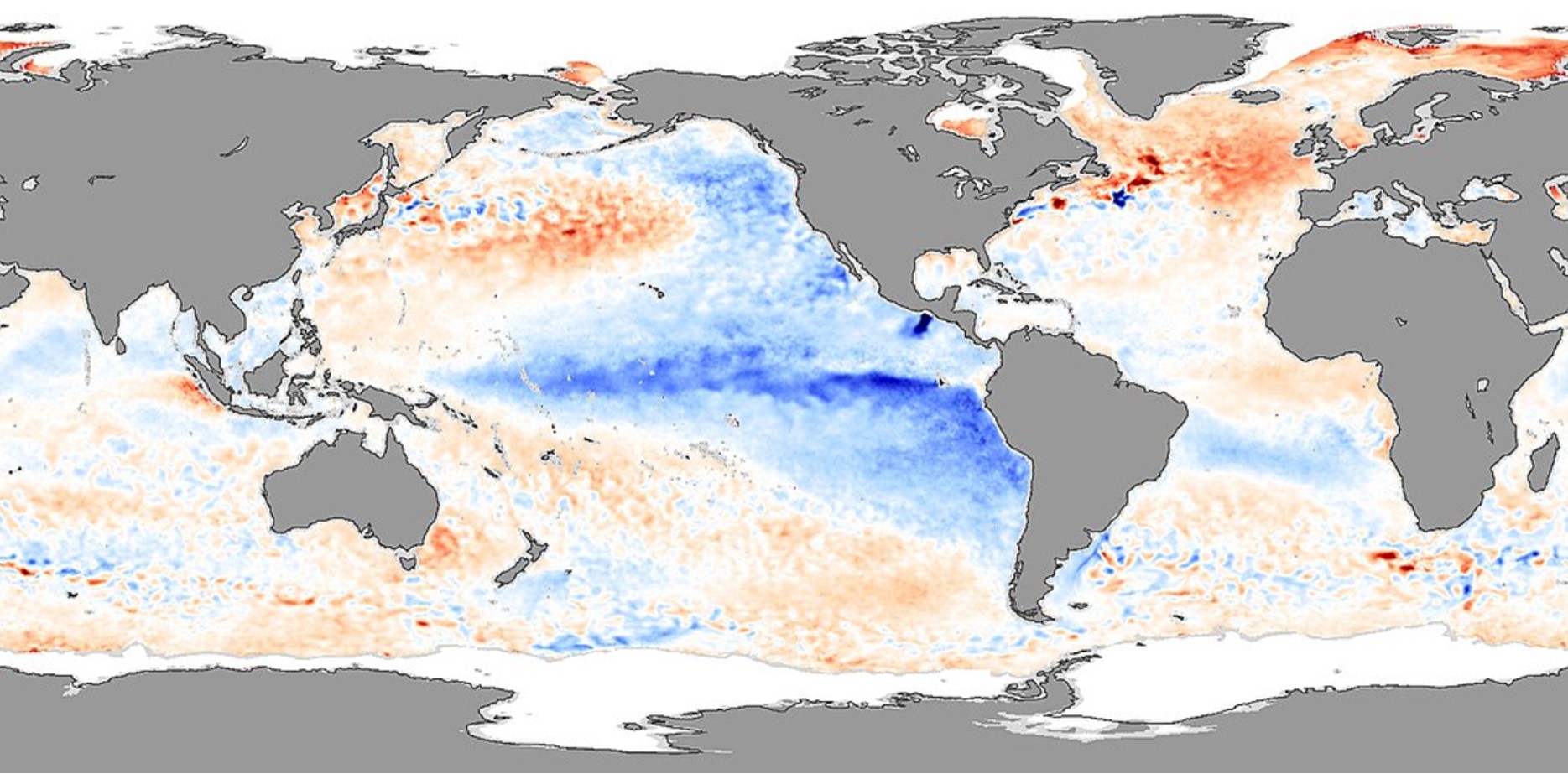Scientists Predict Potential Collapse of Key Ocean Current by 2030s
The Atlantic Meridional Overturning Circulation (AMOC) is essential for maintaining Earth’s climate balance. It transports warm water from the tropics to the North Atlantic, where it cools and sinks, driving a global circulation pattern.
This process helps regulate temperatures and weather patterns worldwide.
How the AMOC Works
Often confused with the Gulf Stream, AMOC’s operation involves warm water cooling, becoming saltier, and sinking in the North Atlantic. Professor César Barbedo Rocha from the Department of Physical Oceanography at the Oceanographic Institute (IO) at USP explains, “The water becomes very cold and loses a lot of heat to the atmosphere. It becomes heavier than the water below and sinks violently.”

Source: Wikipedia
This cycle is crucial for transporting heat across the globe.
The Threat from Global Warming
Global warming, driven by greenhouse gas emissions, is disrupting the AMOC’s heat transport mechanism.

Source: Wikipedia
Melting glaciers introduce fresh water into the North Atlantic, diluting the saltwater and making it less dense, thus interfering with the sinking process crucial to AMOC’s function.
Early Signs of Trouble
In February 2024, researchers from Utrecht University detected early signs of AMOC weakening.

Source: Freepik
Using advanced climate models, they observed changes in sea currents, suggesting a significant disruption could occur much sooner than expected, potentially within the next decade.
Dire Predictions for the Future
A study by the University of Copenhagen predicts the AMOC could slow down as early as the 2030s.

Source: Sarah Brown/Unsplash
This slowdown might lead to a rise in sea levels by up to one meter, threatening coastal cities with increased flooding and altering weather patterns globally.
Long-Term Impact of AMOC Changes
The disruption of the AMOC could have long-lasting effects. The water that sinks in the North Atlantic and returns to the surface for cooling takes approximately a thousand years to complete its cycle.

Source: Wikimedia
Any changes now could have repercussions far into the future.
Quantitative Studies Highlight the Risk
Quantitative studies from the University of São Paulo indicate a 95% chance of AMOC collapse occurring between 2025 and 2095.

Source: Freepik
This high probability underscores the urgency for immediate action to mitigate the impacts of global warming on this critical ocean current.
Global Consequences of AMOC Disruption
The weakening of the AMOC could lead to severe weather changes, including harsher winters in Europe and more intense storms in the Atlantic.

Source: Ruvim Miksanskiy/Pexels
These changes would not only affect local climates but also have broader implications for global weather patterns and ecosystems.
Lack of Preparedness Among Nations
Despite numerous warnings from scientists, most countries are not adequately prepared to handle the impacts of AMOC disruption.

Source: @decemergency/Instagram
There is a pressing need for international cooperation and robust climate policies to address the potential fallout from this impending crisis.
The Role of Climate Models in Predictions
Climate models run on supercomputers have been instrumental in predicting the impact of melting glaciers on AMOC.

Source: Melissa Bradley/Unsplash
These models simulate various scenarios, helping scientists understand potential future changes and the timeline of these events.
Calls for Immediate Action
Scientists urge immediate action to reduce greenhouse gas emissions and slow global warming.

Source: Freepik
By addressing the root causes of climate change, it may be possible to mitigate some of the most severe impacts on the AMOC and global climate systems.
Public Awareness and Education
Raising public awareness about the potential collapse of the AMOC is crucial.

Source: Freepik
Educating people about the science behind ocean currents and climate change can drive collective action and support for policies aimed at preserving our planet’s delicate climate balance.
